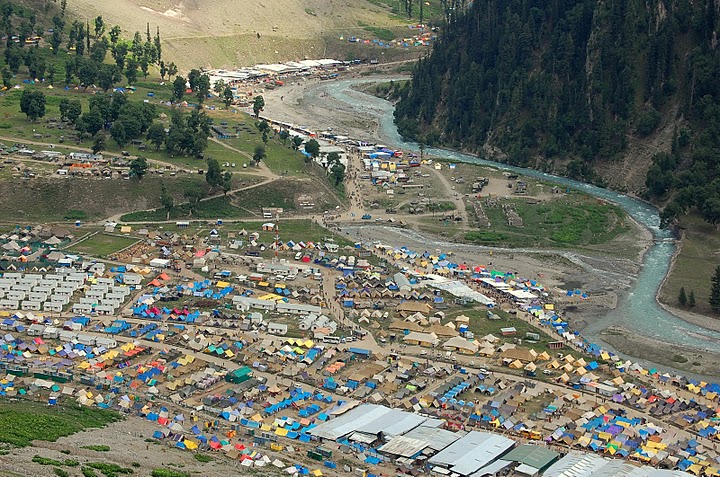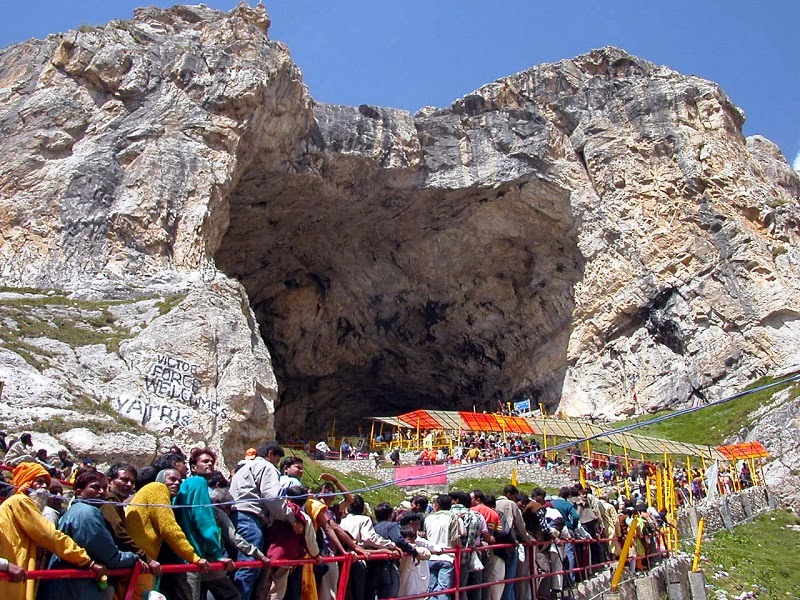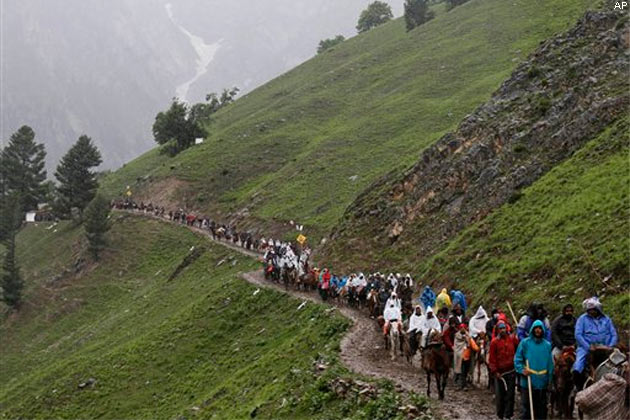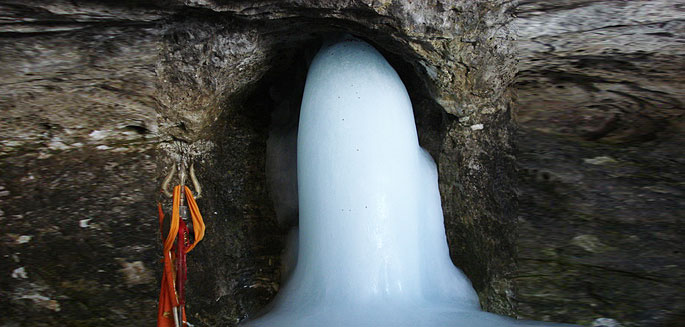Every year thousands of visitors throng to Amarnath Yatra and worship the Hindu shrine which is located in Jammu & Kashmir at a height of 3,888 meters above sea level. The holy cave shrine has the image of Lord Shiva, which is in the form of lingam flock devotees from all over the world. And the best time to visit is in the sacred month of shravan which starts in July every year.

There are two conventional routes to reach the Holy cave :
1) Jammu- Pehalgam- chandanwari- Holy cave (315 kms).
2) Jammu- Sonamarg- Baltal- Holy cave (414 kms)
This year the pilgrimage yatra starts from 2nd, July 2015 & concludes on 29th, August 2015.
History : Chosen by Bhole Shankar, also known as Lord Shiva, Amarnath Shrine Temple hold the importance of narrating the secrets of immortality& inception of the universe by Lords Shiva to his wife Parvati. It is also stated that besides many other theories this cave was first found by a Muslim shepherd recognized as Buta Malik.

Connectivity:
By Road- When travel by bus , the best possible route is from Kashmir to Pahalgam which is a 91 km journey that can be covered by Bus/taxi available at Srinagar. The second traditional route that can be taken is from “Jammu till Pahalgam & the distance between them is 276.1 kms. The devotees can get access to buses/local transport till Chandwari which is at a distance of 16 km from Pehalgam.
By Air: The nearest airport to reach to Amarnath Temple is in Srinagar, Daily flights from Delhi & Jammu to Srinagar can be boarded that saves a lot of time during your journey to the Holy Shrine.
By Train: Jammu is the nearest railway station so a train from Delhi till Jammu can be taken to reach till Jammu. Trains like Jammu Rajdhani from Delhi, Andaman Express from Chennai, Himgiri Express from Howrah & trains from various other states are well connected to it.

Accommodation : Since the cave is sited at a higher altitude it is hard to find luxurious hotels thus, one can find camps arranged by the Amarnath Shrine Board in Chandanwari, Sheshnag and Panjtarni preceding the Pehalgam route, whereas on the other hand the devotees following the Sonamarg route starts their journey at Baltal by foot & have to return back on the same day respectively to Baltal as there is no place to camp during the journey.







